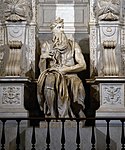Baths of Titus
1st-century establishments in Italy80s establishments in the Roman EmpireAncient Roman baths in RomeAncient Roman building and structure stubsBuilding projects of the Flavian dynasty ... and 3 more
Italian building and structure stubsRome R. I MontiTitus

The Baths of Titus or Thermae Titi were public baths (Thermae) built in 81 AD at Rome, by Roman emperor Titus. The baths sat at the base of the Esquiline Hill, an area of parkland and luxury estates which had been taken over by Nero (AD 54–68) for his Golden House or Domus Aurea. Titus' baths were built in haste, possibly by converting an existing or partly built bathing complex belonging to the reviled Domus Aurea. They were not particularly extensive, and the much larger Baths of Trajan were built immediately adjacent to them at the start of the next century.
Excerpt from the Wikipedia article Baths of Titus (License: CC BY-SA 3.0, Authors, Images).Baths of Titus
Viale del Monte Oppio, Rome Municipio Roma I
Geographical coordinates (GPS) Address Nearby Places Show on map
Geographical coordinates (GPS)
| Latitude | Longitude |
|---|---|
| N 41.892555555556 ° | E 12.494052777778 ° |
Address
Thermae Traianae
Viale del Monte Oppio
00184 Rome, Municipio Roma I
Lazio, Italy
Open on Google Maps











